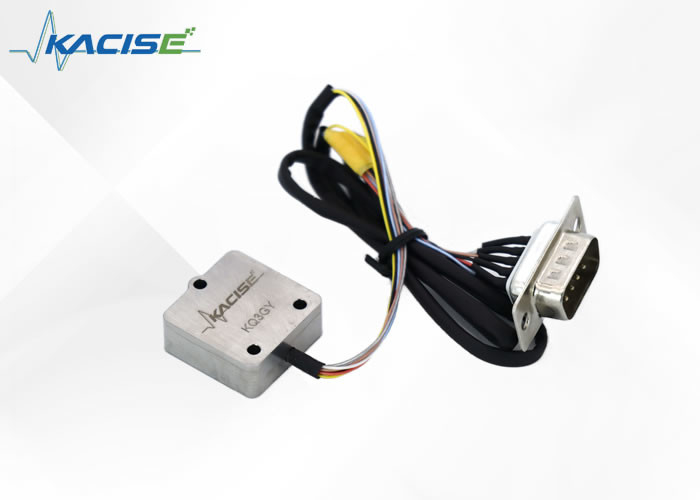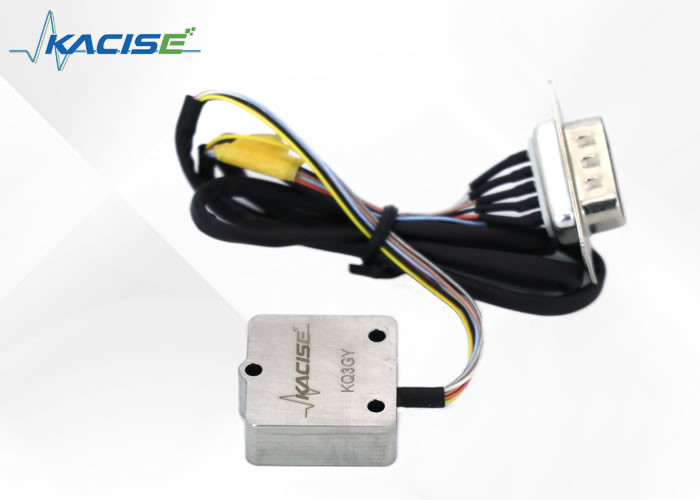Product Description:
The KQ3GY gyroscope has been designed using quartz MEMS technology. The major highlight of this technology is its ability to sense the angular velocities of multiple axes, which can be configured according to the needs of the customers. Furthermore, this technology facilitates the output of digital information through the serial port.
MEMS (Micro-Electro-Mechanical Systems) successfully integrates various micro-components such as micro-sensors, micro-actuators, micro-mechanical structures, micro-power sources, micro-energy, signal processing and control circuits. Besides, it also includes high-performance electronic integrated devices, interfaces and communication facilities. The MEMS system size is generally a few millimeters or less, and its internal structure usually ranges from micron to nanometer.
MEMS accelerometers, MEMS optical sensors, MEMS pressure sensors, MEMS gyroscopes, MEMS humidity sensors, MEMS gas sensors are the commonly used products that are developed using the MEMS technology. Furthermore, there are several integration products available that have emerged due to the successful implementation of the MEMS technology.
Features:
● Large-scale production
● Short startup time
● Wide operating temperature range
● Low power consumption
● High reliability
● Small size and light weight
● Serial output
Technical Parameters:
| Parameter |
KQ3Gy |
| Power Requirements |
| Input Voltage |
5±0.2 Vdc |
| Input Current |
< 50 mA |
| Performance |
| Measurement range |
±100 |
| Bias |
≤0.03 |
| Bias stability |
≤20 |
| Bias repeatability |
≤20 |
| Scale factor nonlinearity |
≤200 |
| random walk |
≤0.25 |
| Threshold |
≤0.005 |
| Bandwidth |
≥140 |
| Acceleration correlation |
≤0.01 |
| Cross coupling |
≤1 |
| Environments |
| Working temperature |
-40℃~+65℃ |
| Random vibration |
6.06g rms |
Dimensions:
Unit:mm

Applications:
Airborne Instrument Measurement
Airborne instrument measurement involves using various sensors and devices to collect data about an aircraft's performance, environment and other relevant variables. This data is used for monitoring, analysis and evaluation purposes. Airborne instrument measurement typically involves the use of tools like altimeters, airspeed indicators, gyroscopes and pressure sensors.
Robot
A robot is a machine designed to perform a variety of tasks that are usually done by humans. Robots can be programmed to do specific tasks such as assembly line work, surgical procedures, search and rescue operations and many more. They typically consist of a variety of sensors, actuators and control units. Robots are highly efficient and can perform tasks that are too dangerous or difficult for humans.
Automated Testing
Automated testing is a testing method that involves the use of software tools to execute tests automatically. It is commonly used in software development processes to ensure that the software being developed is functional and free from errors. Automated testing can also help to save time and reduce costs as it involves less human involvement. Tools used in automated testing include Selenium, JUnit and TestComplete.
Attitude Reference System
An attitude reference system is a device used in aircraft to determine the aircraft's orientation. It typically includes sensors like accelerometers, gyroscopes and magnetometers. These sensors help to determine the aircraft's pitch, roll and yaw angles. The attitude reference system is crucial for the proper functioning of the aircraft's autopilot system.
Control System
A control system is a system that manages, regulates and controls the behavior of a device or process. Control systems are used in a variety of industries, including aviation, manufacturing, and automation. They typically include sensors, actuators and a control unit. Control systems can be designed to operate manually or automatically and play a vital role in ensuring the proper functioning of the system they are integrated with.
Flight Test
A flight test is a process used to evaluate an aircraft's performance and behavior under certain conditions. Flight tests are typically conducted in a controlled environment to ensure the safety of the crew. They involve collecting data on the aircraft's performance and analyzing it to make improvements. Flight tests are essential for ensuring that the aircraft meets the desired performance and safety standards.
Platform Stability
Platform stability is the ability of a device or system to remain stable and perform effectively even when subjected to external factors like wind, vibrations or motion. In aviation, platform stability is crucial for maintaining the stability of the aircraft during flight. Devices like gyroscopes and accelerometers are used to measure the platform stability of the aircraft. This information is used to make adjustments that help to improve the platform stability of the aircraft.
Support and Services:
Our Electronic Gyroscope Sensor is designed with precision to provide reliable performance for your applications. Our support includes detailed product documentation, an extensive online knowledge base, and troubleshooting guides to help you resolve any issues you may encounter.
We are committed to the satisfaction of our customers and strive to provide exceptional after-sales support. Should you have any feedback or suggestions, we welcome your input as it helps us to continuously improve our products and services.
Packing and Shipping:
Product Packaging:
The Electronic Gyroscope Sensor product will be packaged in a sturdy cardboard box with foam inserts to ensure safe transport. The product will be sealed in a plastic bag to protect it from moisture and dust. The box will be labeled with the product name, brand, and barcode for easy identification.
Shipping:
The product will be shipped via standard ground shipping. We will ensure that the product is shipped within 2 business days after receiving the order. The shipping cost will be calculated based on the weight and destination of the package. Customers will receive a tracking number via email once the product has been shipped.

 Your message must be between 20-3,000 characters!
Your message must be between 20-3,000 characters! Please check your E-mail!
Please check your E-mail!  Your message must be between 20-3,000 characters!
Your message must be between 20-3,000 characters! Please check your E-mail!
Please check your E-mail! 


